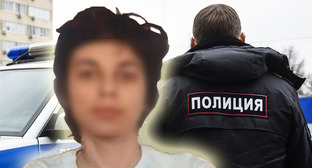16 January 2013, 21:00
Dagestan: in 2012, 695 persons suffered in the armed conflict
In 2012, at least 695 persons fell victim to the armed conflict in Dagestan; of them, 405 persons were killed and 290 more were wounded. As compared with 2011, the number of victims decreased by more than 15.6 percent - in 2011, there were 824 of them. We can note an essential decrease in the count of casualties and wounded persons among civilians and a growth of the number of casualties among the underground. These are the results of the calculations made by the "Caucasian Knot" based on the data received from its own correspondents and on information from other open sources.
Losses of power agents and the underground
In 2012, it was reported about 53 explosions in Dagestan, including four terror acts committed by suicide bombers. In 2011, the number of explosions was higher - 86, including four acts, committed by suicide bombers.
Losses of among the members of the armed underground in the republic in 2012 made 231 persons, including those who died as a result of self-explosions and "counterterrorist" actions of power agents. Seven more persons were wounded at detention.
In 2012, 173 persons treated as militants were killed in the republic.
The "Caucasian Knot" is here emphasizing that the statistics on members of the armed underground accounts for those, who have been announced as such by employees of law-enforcement bodies.
In 2012, as a result of shelling, explosions and armed clashes 110 employees of power bodies were killed, and 205 power agents received wounds. In 2011, the figures were 111 and 281 persons accordingly.
Victims among civilians
The armed struggle of power agents with militants results in victims among civilians. In 2012, there were 142 such persons in Dagestan; of them, at least 64 persons died and at least 78 more civilians were wounded.
In 2011, shelling by unidentified persons, shootouts of power agents and militants and explosions hurt 259 civilians; of them, 129 persons died, and 130 persons more were wounded.
The above statistics is unable to reflect, with a 100-percent precision, the number of victims under each of the categories specified in the report. Not all the data gets into news reports. It is not always possible to verify the truthfulness of the statements made by law-enforcement bodies.
Less civilians and more militants are lost
The above figures indicate that in 2012 power agents operated more actively, which resulted in essential losses among the armed underground: the number of killed and wounded power agents went down; peaceful residents suffered less by half; and at the same time, the number of casualties among militants went up.
The total number of victims of the conflict went down from 824 persons (of whom 413 were killed and 411 more wounded) in 2011 down to 695 persons (of them, 405 persons perished and 290 more were wounded) in 2012. Thus, the number of victims within the year went down by 129 persons - a decrease by more than 15 percent as compared with the previous year. The total number of victims in 2012 was almost the same as in 2010 (then, 685 persons).
In 2012, as a result of shelling, explosions and armed clashes one power agent more was killed; however, in 2012 law enforcers received much fewer wounds - by 76 power agents less, than in 2011, which is a decrease by 27 percent. At the same time, in 2012, by 58 militants were killed more than in 2011 - that is, the losses in this category went up by 33.5 percent.
We note an essential reduction of the number of explosions - from 86 in 2011 to 53 in 2012. The number self-explosions remained the same - four within the year.
The most essential dynamics in Dagestan was noted in the category of civilian victims: in 2012, the death toll of civilians was by 65 persons less (i.e., by more than 50 percent) than in 2011, while the list of wounded persons was shorter by 52 persons, that made a 40-percent decrease as compared with 2011.
Let us remind you that Dagestan remained - within the year - the leader by the number of victims among the regions of Northern Caucasus. The situation persisted despite the measures aimed to decrease the tension, including the work of the adaptation commission for the persons, who expressed their intention to leave the armed underground and get back to peaceful life. During the time the commission was at work - two years - its members considered 46 applications; while 23 persons who approached the commission are currently at large.
In March 2011, Rasul Kadiev, a lawyer and a member of the working group of the commission, pointed to essential drawbacks in organization of the work of the Adaptation Commission and noted that the whole work relied only on the authority of its head Rizvan Kurbanov.
Kurbanov himself noted that the dynamics of appeals to the Adaptation Commission was positive, although its members recognized the presence of contradictions with representatives of the power block.





Комментирование через Кавказский узел